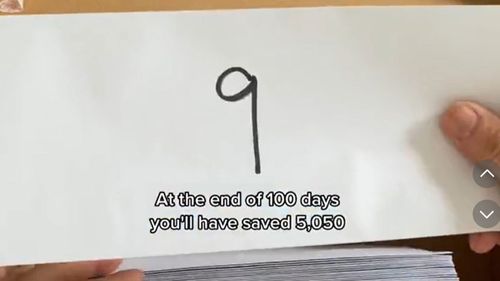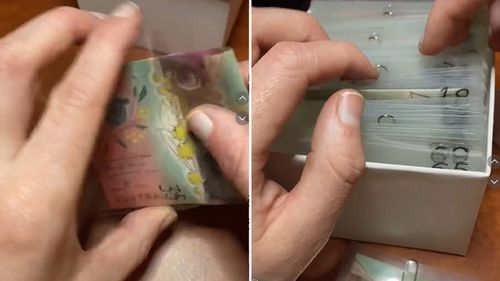To break it down, you take 100 envelopes, easily purchased for less than $4.50, and label them one to 100.

Then on day one you put $1 in, day two is $2, on day 10 is $10 and so forth until you reach envelope 100 and pop $100 in.
All up this promises to save a grand total of $5050.
Some users shuffle the envelopes and pick out random numbers on a day to pop money into and cross it off the list while others go from one to 100.
It seems like an easy hack to put away a bit of money every day and end up with a cash buffer to pay for basic expenses like bills, groceries or rent.
Financial adviser Cameron McLean from Acumen Wealth Management said although the challenge is positive and getting people to think about savings, there are a few flaws.
The first issue McLean pointed out is where are people getting the money to save particularly as the challenge is geared towards social media users who are typically generation z.
It is an especially poignant question as the challenge expects you to save $500 in the final week.
“Where do you get the money from? If we’re dealing with generation z, it’s easy enough and very good putting a $1, $2 and then $3 but then you get to the extreme in the final week you have to find $98 one day and $99 the next,” he told 9news.com.au.
“I can see that part way through it would become quite demotivating when the amounts get higher and you have other expenses to pay.
“It would be easy to drop off and say ‘that was too hard’.”

He said the rising denominations people save in the challenge will cut into budgeting consistency as well.
Read Related Also: The 'haunting' mission to Titanic's final resting site
“In the last weeks of the challenge it will be difficult and what are they going to use to cover the rest of the expenses,” he said.
“What they’re going to find is they’re going to dip back into the envelopes.”
McLean said it would be better to either use different envelopes for different expenses.
“It’s more effective to use the envelopes to say ‘I’ll put this much aside for rent, this much for groceries’ as opposed to putting the money aside for no specific reason,” he said.
The next issue with the challenge is Australia is a majority cashless society with most people using their cards or phones to pay for things as well as being paid directly into their bank accounts.
McLean said this is a “huge disadvantage to the challenge”.

McLean instead recommended young savers to be putting aside about 10 per cent of their income and have specific goals.
“Start with something simple like 10 per cent of your income and put that aside for savings so the other 90 per cent can be used for whatever you need,” he said.
“And be realistic with what you can save, I know of people who earn $2000 and might go ‘I can save $500 a week’ and they realistically can’t save that.
“So start lower and review it again every few months.”

Adani boss tumbles down rich list after bombshell report
The information provided on this website is general in nature only and does not constitute personal financial advice. The information has been prepared without taking into account your personal objectives, financial situation or needs. Before acting on any information on this website you should consider the appropriateness of the information having regard to your objectives, financial situation and needs.



